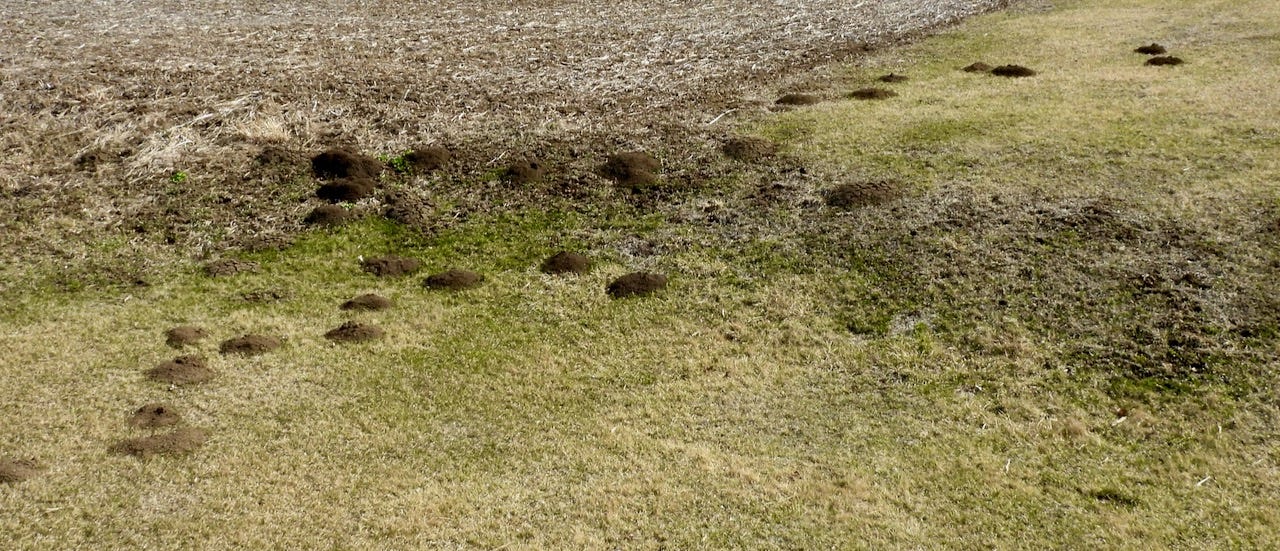
Just as gopher mounds seem to pop up at the first sign of greening in pastures, spring ephemerals greet the new season amidst the brown, dead leaves in woodlands. The tiny wildflowers have evolved to bloom before leaf-out on the trees, so they can capture the sunlight before the forest floor turns shady.

In our part of northeast Iowa, we can count on snow trilliums to emerge first. On a north-facing slope along the Turkey River, the three-petaled beauties sometimes poke through lingering snow, as their name might suggest, or at least may get coated with a late March or early April snowy blanket.

Finding the first trilliums means it’s time to start snooping for other “spring beauties” – literally. The spring beauty has slender, grass-like leaves, and a blossom with five petals streaked in pink. It takes sharp eyes to find the first flowers, which only open when it’s sunny. Insects may lead you there, though, as wasps and other pollinators search out the blossoms for a bit of nectar and pollen.
Another early bloomer, bloodroot, gets its name – no surprise!- from the reddish juice flowing from a broken root or stem. Its eight or more petals are the epitomy of white, but they seldom last long before falling to the ground to leave an erect stem clasped by a lobed green leaf.
While bloodroots first appear in sunnier spots, hepaticas thrive on shadier, cooler slopes. Could their hairy stems help them withstand the cold? The name evolved from the Greek word hepatikos, meaning liver, because early botanists thought the mottled, three-lobed leaves resembled a liver. The leaves may linger through the winter, but they’re generally buried under leaf litter and hard to find in spring. The flowers often grow in clusters, however, with a bouquet of 3 or more showy blossoms ranging from white to deep purple. To taxonomists, the flowers have 6 to 10 “sepals,” even though we amateurs call them petals.
Gardeners may notice the resemblance between cultivated bleeding hearts and wild Dutchman’s breeches. The stems of Dutchman’s breeches sprout flowers that look like upside-down pants hanging on a clothesline.
The feathery leaves appear first, with the “breeches” later dangling from upright or drooping stems.
Pinkish rue anemones have just started to appear on a sunny bank at our farm – but they’ll persist another month or more when the weather warms. They typically have six petals (OK, sepals!)
As we’re seeing-hearing-feeling spring come alive with returning birds and greening trees, we check off each first-of-the-year species of flower yet to come, as well: bellwort, Virginia bluebells, columbine, anemone, wild geranium, May apple, wild ginger. And soon it will be morel mushroom time . . . But that’s another story!
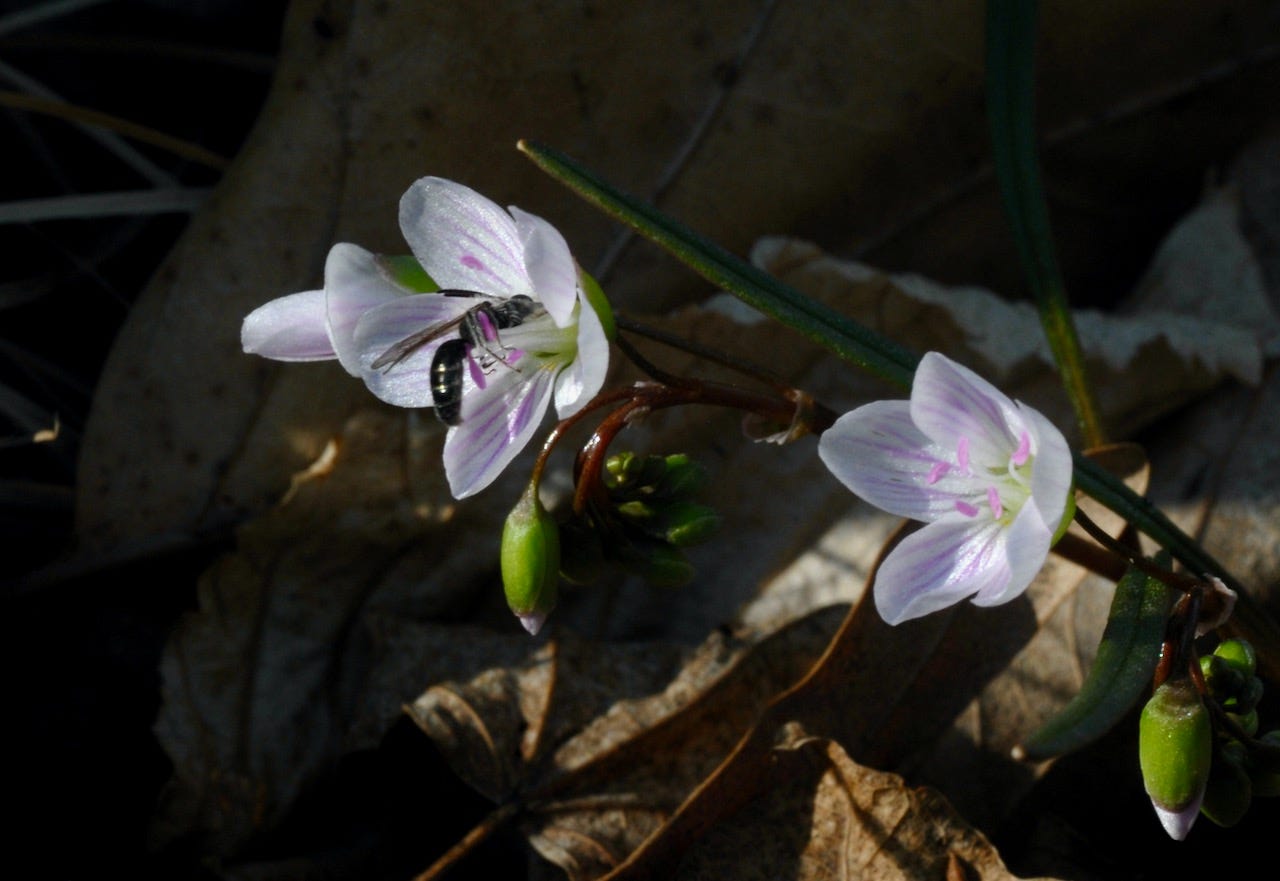
I am privileged to be a member of the Iowa Writers’ Collaborative, several dozen writers who share their perspectives on a variety of topics affecting Iowa and Iowans. Most posts are free - but paid subscriptions are appreciated. Click here for our roster of writers. And please subscribe to your favorites.


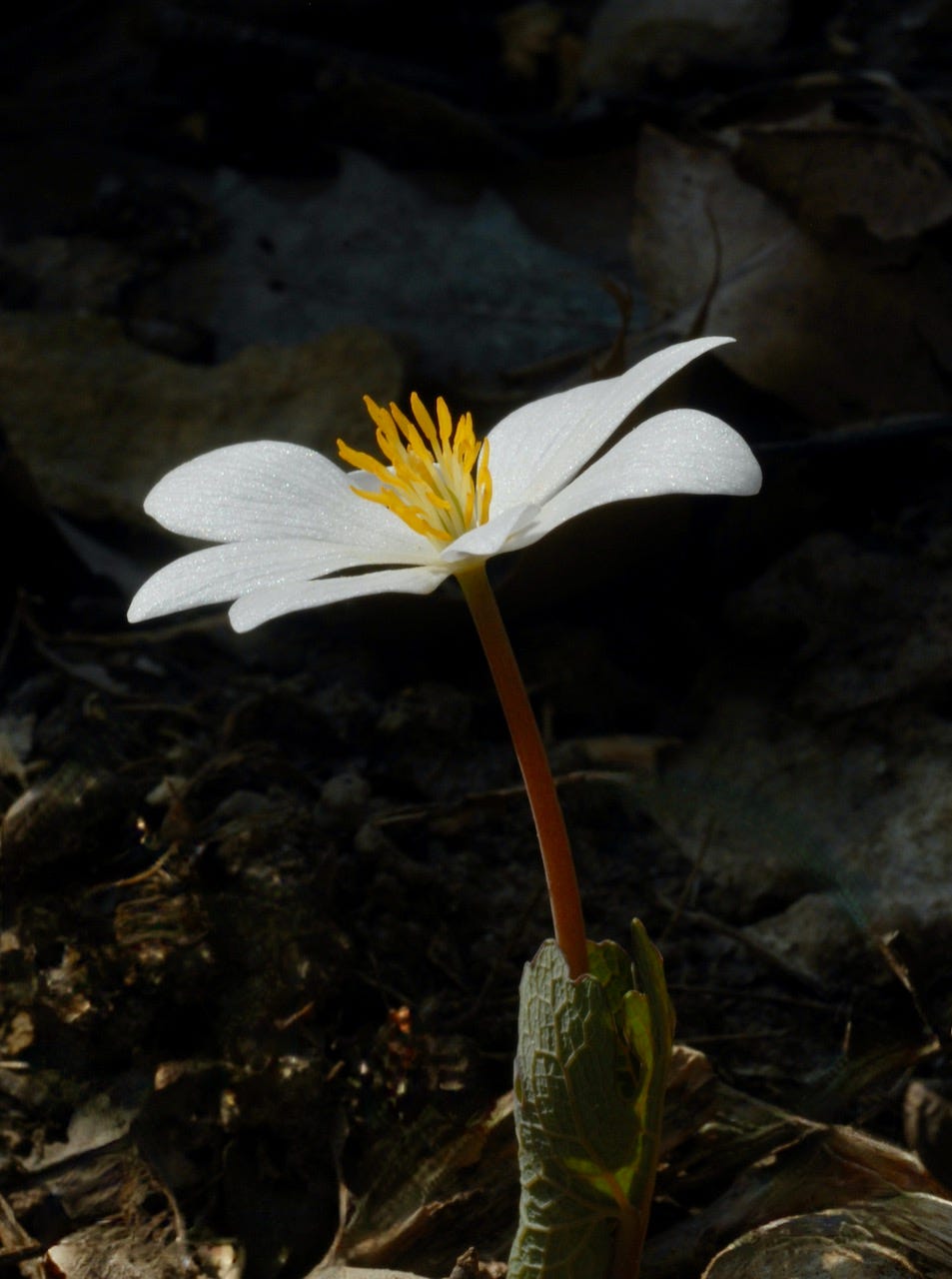
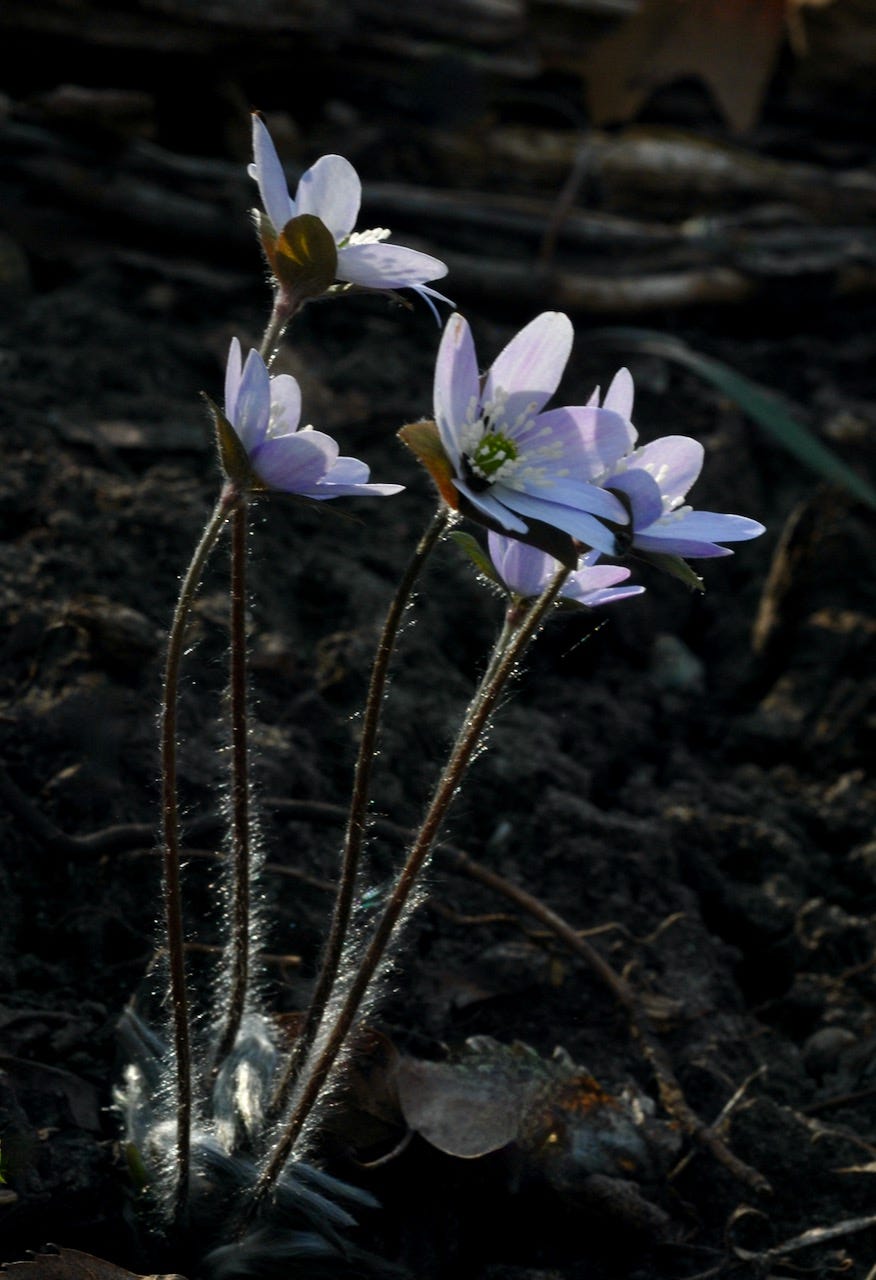
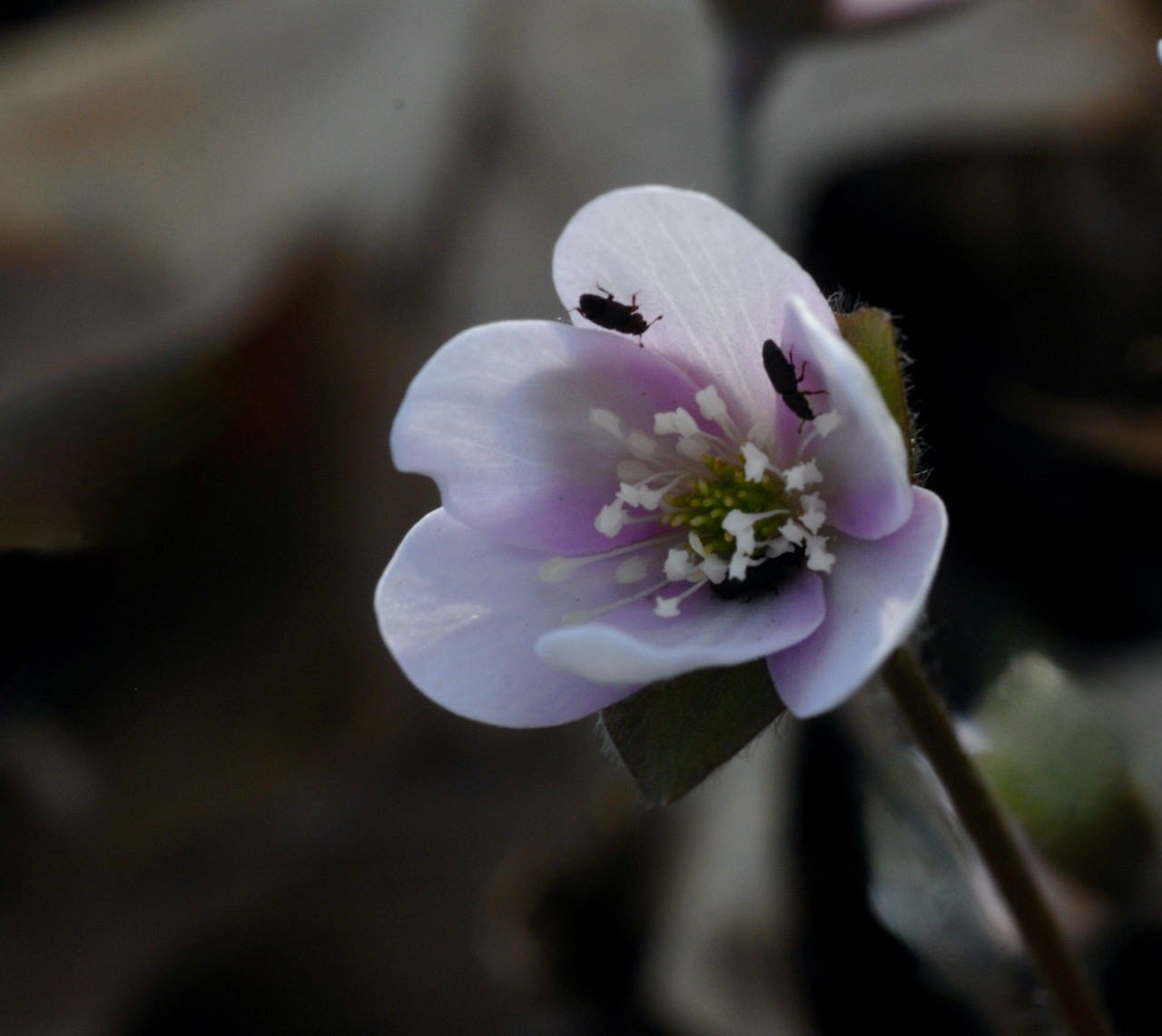

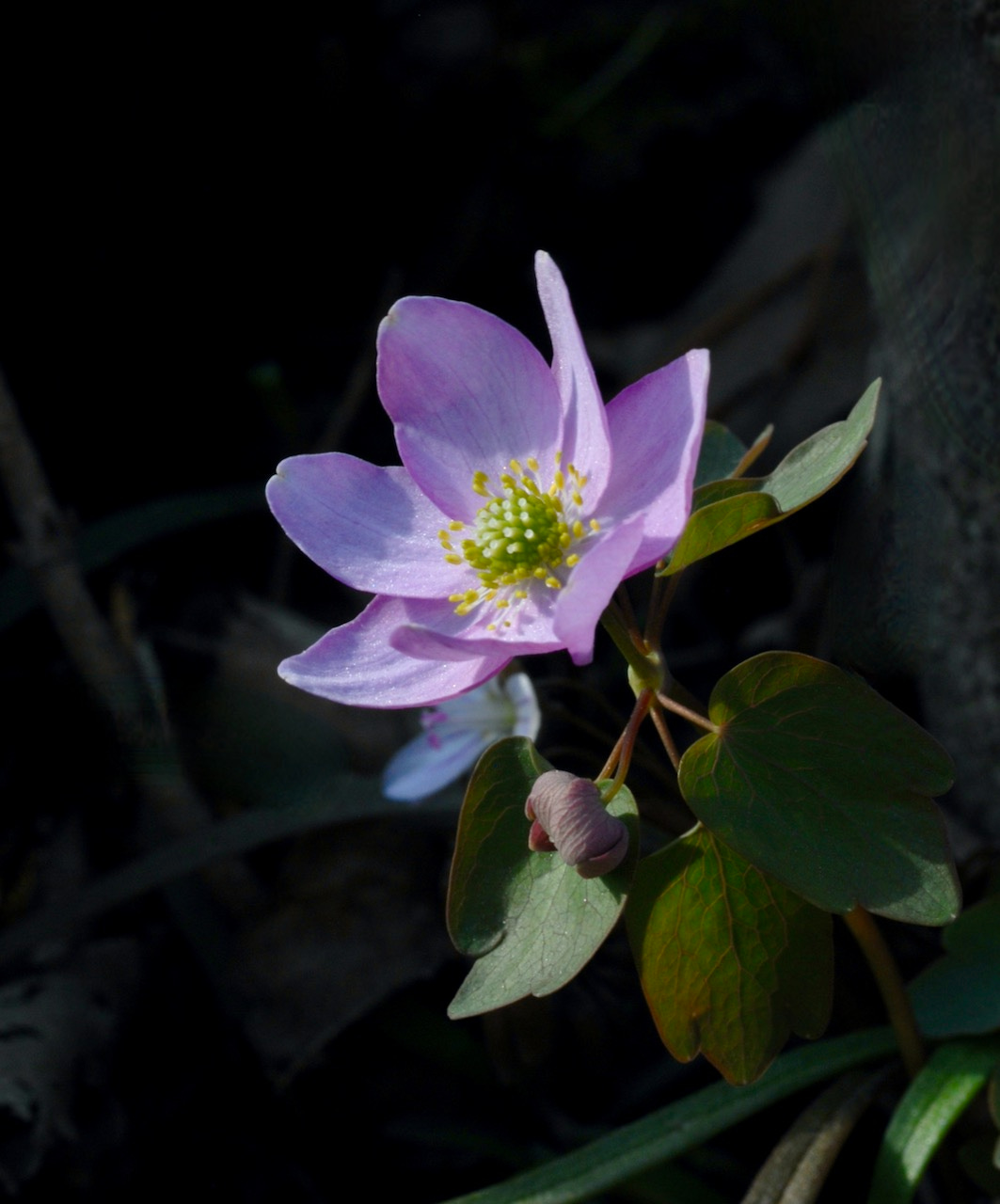
Great stuff as usual Larry! I'm looking forward to our first campout tonight at Yellow Banks park...and a tromp thru the woods.
These photos are gorgeous! Thank you so much for sharing them with us!